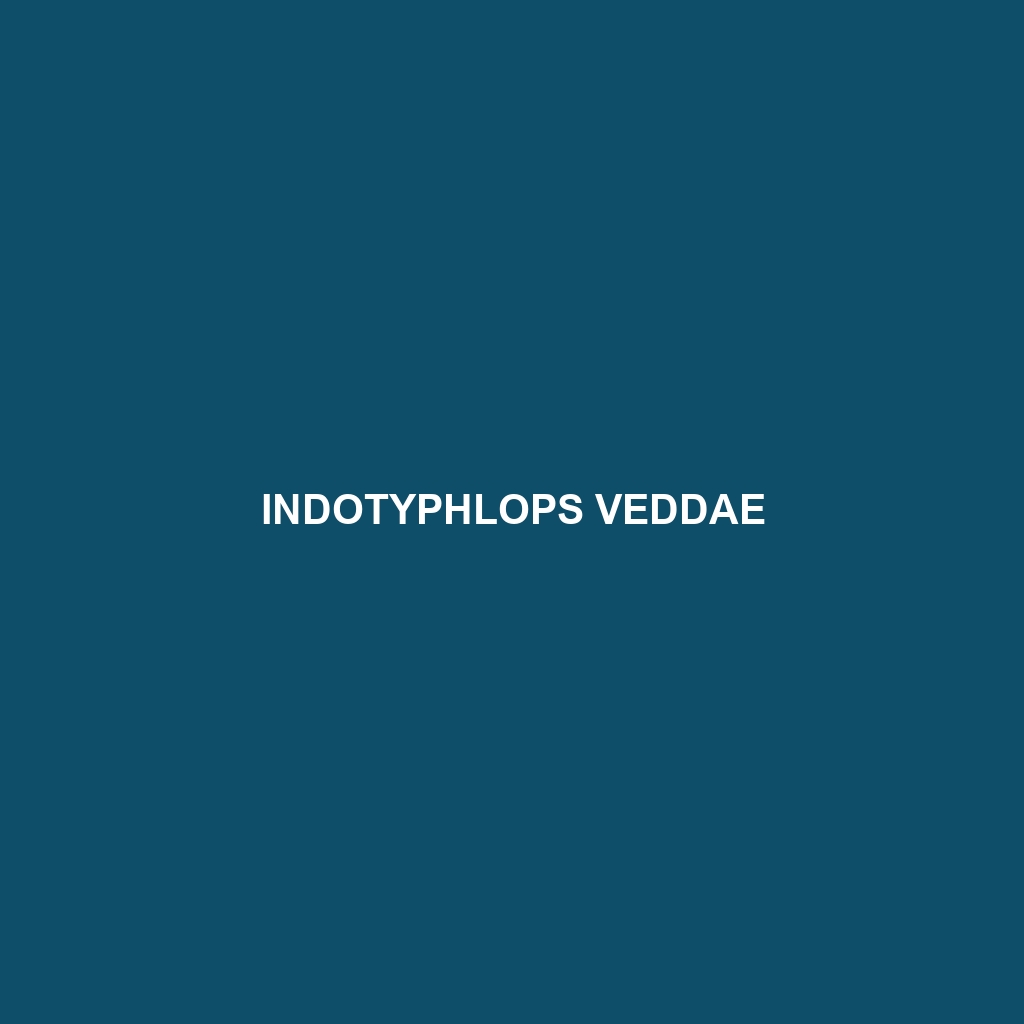Common Name
Indotyphlops veddae
Scientific Name
Indotyphlops veddae
Habitat
Indotyphlops veddae primarily inhabits the tropical and subtropical regions of South Asia, specifically in parts of India and Sri Lanka. This species favors rainforests and temperate forests, where high humidity and abundant foliage provide the ideal conditions for its survival. The species can be commonly found in leaf litter, under rocks, and in soil, where it seeks shelter from predators and extreme environmental conditions. The warm climates and rich biodiversity of these habitats support the life cycles and feeding behaviors of Indotyphlops veddae, making it an integral part of the ecosystem.
Physical Characteristics
Indotyphlops veddae is a small, slender snake species, typically measuring between 30 to 50 centimeters in length. Its elongated body is covered with smooth, shiny scales that are predominantly a light brown or beige color, often with dark streaks running along its length. Its head is distinctively small and pointed, minimizing damage as it burrows into the ground and leaf litter. A unique feature of this species is its degenerated, non-functioning eyes, which are characteristic of many burrowing snakes. This adaptation emphasizes its subterranean lifestyle, where vision is less crucial for survival.
Behavior
The behavior of Indotyphlops veddae is primarily influenced by its nocturnal lifestyle. Active during the night, it is rarely seen above ground during daylight hours. This serpentine species exhibits unique foraging habits, often using its highly specialized tongue to sense vibrations and chemical cues in its environment. Mating rituals usually take place during the rainy season when conditions are more favorable for reproduction. Social interactions are limited; these snakes are generally solitary creatures that only come together to mate. Their elusive nature makes them a subject of intrigue among herpetologists and nature enthusiasts alike.
Diet
Indotyphlops veddae is considered an insectivore, primarily feeding on small invertebrates such as worms and larvae. Its diet consists of a range of soil-dwelling organisms that are abundant in its natural habitat. The snake employs its keen sense of smell to locate these prey items concealed in leaf litter and soil. This specialized feeding behavior plays a crucial role in controlling the insect population, thus maintaining ecological balance within its habitat.
Reproduction
The reproductive cycle of Indotyphlops veddae typically begins with mating in the late rainy season, which coincides with increased moisture and an abundance of food sources. After mating, females lay a clutch of 3 to 10 eggs, usually in damp soil or leaf litter. The gestation period lasts approximately 60 to 90 days, after which the hatchlings emerge fully formed and ready to fend for themselves. Parental care is minimal, with the neonates receiving no assistance post-hatching, necessitating immediate independence in their quest for food and shelter.
Conservation Status
According to the IUCN Red List, Indotyphlops veddae is currently classified as Least Concern, although its populations are threatened by habitat destruction due to deforestation and agricultural expansion. Conservation efforts aimed at preserving its natural habitat and promoting awareness among local communities are crucial for ensuring the long-term survival of this species. Continued research is necessary to assess population trends and the impacts of environmental changes on its habitat.
Interesting Facts
One of the most interesting aspects of Indotyphlops veddae is its ability to navigate through soil in search of prey using specialized muscles and its streamlined body shape, which allows for efficient burrowing. Additionally, this species exhibits a fascinating adaptation by possessing a claw-like scale at the tip of its tail, which helps it to dig and maneuver through the earth. Their rarity in the wild often makes them a point of interest for herpetological studies, emphasizing their unique evolutionary adaptations.
Role in Ecosystem
Indotyphlops veddae plays a significant role in its ecosystem as a natural pest controller. By feeding on insect larvae and other soil-dwelling pests, it helps regulate the populations of these organisms, which could otherwise become detrimental to plant health. This species serves as a predator and, in turn, becomes prey for larger animals in the food web, thereby promoting biodiversity. The ecological balance maintained by Indotyphlops veddae is essential for sustaining various plant and animal species within its habitat, underscoring its importance as a contributor to the health of the ecosystem.
